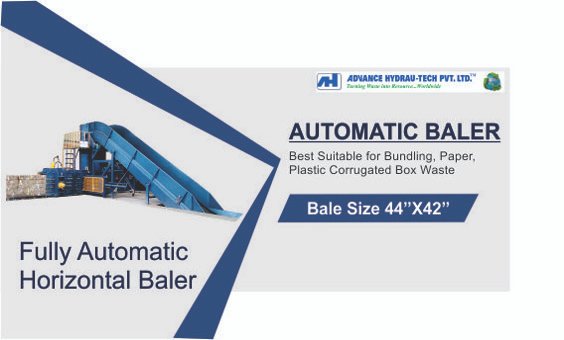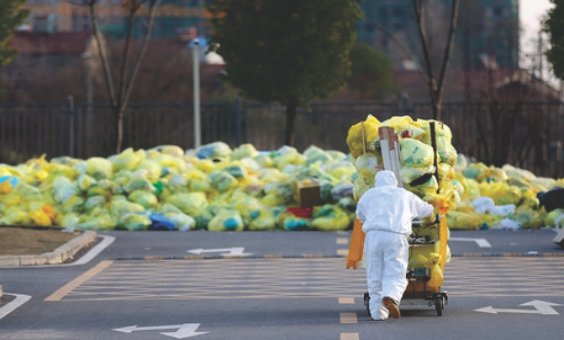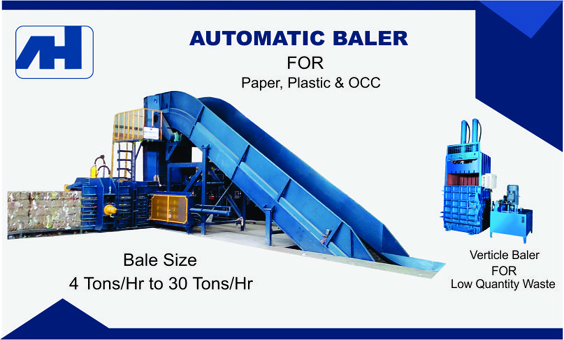Proper Baling techniques for scrap paper can help achieve the competitive edge. Paper Mill customers demand strong, heavy, homogeneous and stackable bales of scrap paper. Baling equipments play a crucial role in achieving these quality bales along with proper feeding of paper scrap baler. Here we discuss some of the important qualities that the paper bales should have and how to achieve them in order to be competitive and increase the bottom line.
Producing strong, heavy and dense bales is the foremost requirement. Heavier bales will help fill up the container or trailer adequately and thus utilise optimum tonnage potential. There might be a need to bale the paper based on the quality or type of paper waste being processed. For example, large cardboard boxes or slippery paper are difficult to bale neatly as these are coated and hence must be baled with crosswire in order to produce strong bales. Bales that are not made properly, for instance, are loosely baled or less dense tend to break or open up has to be baled again.
Speed of the Paper Baling machine is also very important to be competitive and increase productivity. The new generation scrap processing machines are more powerful and help produce heavier bales. These typically offer capacity of 2 to 25 tonnes per hour depending on the requirement of a scrap mill.
While producing heavy bales, one important consideration is to feed the paper baler with optimum amount of scrap paper. While adequate amount of scrap should be fed in order to make dense bales, on the other hand feeding too much paper will lead to production of extra long bales that might break while moving or transporting. This is particularly important while baling pre-compacted paper. These days many Paper mills have pre specified the length and size of the paper bales that they will accept and hence should be kept in mind while processing paper scrap.
Besides being strong and heavy, the paper bales must be easily stackable. This is a very important requirement in terms of safety as well as the space required while stacking in shipping containers or at the warehouse. Many paper mills have faced fatality by falling of bales of recovered paper and thus are avoiding this risk by not accepting bales that are not suited from a stackability point of view. The bales should be stacked while overlapping each other, like a brick wall instead of directly on top of each other. This arrangement is likely to be more stable. Stackable bales have also proved to help increase productivity.
Thus, the paper bales should neither be too light that will not fill up a load, nor be too heavy or too large that there is a risk of breaking when the bales are being moved. Tightly baled and stackable bales have also proved to help increase productivity. Choosing the correct baling equipment according to the need of a recycling unit is crucial.
Advance Hydrau Tech Pvt Ltd, India, produces various models of paper balers such as single cylinder paper baler for 1-5 tonnes paper scrap, vertical paper baler for <20 tonnes tonnes paper scrap and our horizontal paper baler can bale up to 25 tonnes waste paper in a day. Due to the advancements in paper recycling techniques in terms of better pulper and pre-soak methods, scrap paper buyers have also started accepting high density paper bales. Thus, our triple action baler which gives the productivity of 1 tonne/ hour and high density is also being widely used for baling paper scrap.



